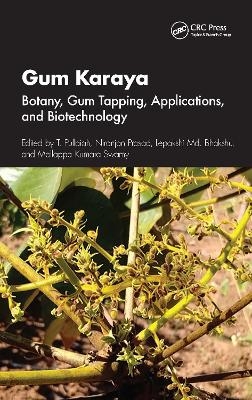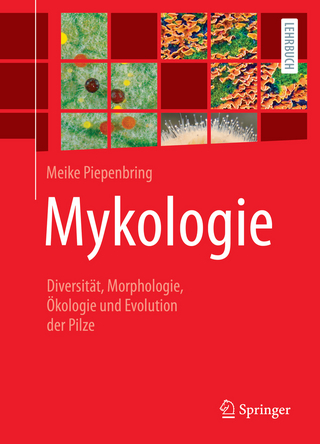
Gum Karaya
CRC Press (Verlag)
978-1-032-57343-4 (ISBN)
Polysaccharide gums have a wide range of applications due to their hydrophilic properties. They have been used as a gelling agent, encapsulating agent, thickener, emulsifier, and stabilizer. Sourcing natural gums from botanical and plant sources has become an important focus in producing acceptable food ingredients in liquids and semi-solid forms. This is mainly because of the positive attitude of consumers toward plant-based gums rather than other gums from animal and microbial sources.
Gum karaya, also known as Indian tragacanth, is a vegetable gum produced as an exudate by trees of the genus Sterculia. Gum karaya has very strong swelling properties, high viscosity, and very poor solubility because of its acetyl groups. Therefore, it is mainly used in cosmetics and pharmaceuticals. Gum karaya is one of the least-soluble gums used for many industries, such as petroleum and gas, textile, paper and pulp, leather and allied products, ammunition and explosives, electrical appliances, adhesives, confectionery, medicine, pharmaceuticals, and cosmetics.
Because of the crude tapping method and overexploitation, the population of karaya trees has markedly declined. In the absence of cultivation of this tree on the regular plantation, there is grave concern about the loss of wild germplasm of S. aurens. As gum karaya is vital for the tribal economy and its trade value is substantial, there is a pressing need to develop a scientific and sustainable tapping method to increase the yield and ensure the survival of the tapped trees. There is also a need for a large-scale plantation of gum karaya. People are becoming health-conscious and are taking natural products as food ingredients. This book will be useful to all the people interested in natural food additives.
This book gives the details of gum karaya–yielding species and their distribution.
Scientific methods of gum tapping are given for sustainable gum production.
Propagation methods, both field and in vitro, are given.
Uses of gum karaya, in cosmetics, pharmaceuticals, and food, are given.
Genetic diversity and biotechnological intervention for the improvement of gum karaya–yielding species are included.
Threats and conservation of gum karaya–yielding species are given.
Prof. T. Pullaiah obtained his MSc and PhD degrees in Botany from Andhra University. He was post-doctoral fellow at Moscow State University, Russia, during 1976–1978. He travelled widely in Europe and America and visted universities and botanical gardens in about 17 countries. He joined Sri Krishnadevaraya University as a lecturer in 1979 and became a professor in 1993. He has held several positions at the university, including dean, faculty of biosciences, head of the Department of Botany, head of the Department of Biotechnology, and member of the Academic Senate. He was the president of the Indian Botanical Society (2014), the president of the Indian Association for Angiosperm Taxonomy (2013), and a fellow of the Andhra Pradesh Academy of Sciences. Under his guidance, 54 students obtained their doctoral degrees. He has authored 70 books, edited 40 books, and published over 340 research papers. His books have been published by reputed international publishers like CRC Press, Springer, Elsevier, Wiley Blackwell, Apple Academic Press, etc. He was also a member of the Species Survival Commission of the International Union for Conservation of Nature (IUCN). Dr Niranjan Prasad did his BE (agricultural engineering) from CTAE, Udaipur (1988) and MTech. (1991) and PhD from IIT, Kharagpur (1996). He obtained his post-doctoral training in smart/active packaging from Michigan State University, USA. He worked as lecturer at NERIST, Nirjuli, Arunachal Pradesh, during 1996–1997. Later, he joined Indian Lac Research Institute, Ranchi, as agricultural research service scientist in 1997 and presently works as principal scientist and the head of Agri Bio-resources Augmentation Division at ICAR-National Institute of Secondary Agriculture, Ranchi, India. He is also working as project coordinator of the All India Network Project on Harvesting Processing and Value Addition of Natural Resins and Gums. He worked as consortium principal investigator of the National Agricultural Innovation Project (World Bank) on Lac Value Chain. During his 28 years of experience in research and extension, he published 65 research papers in national and international journals. He has developed several tools and machines for lac cultivation and processing which have been commercialized. Dr Prasad is a member of several professional societies. He is the recipient of many awards, namely, the ISAE Jain Irrigation Award (1987–1988); DST SERC Visiting Fellowship (1999); ISAE Distinguished Service Certificate (2002–2003); IINRG Ranchi Certificate of Merit (2004–2009); ISAE Commendation Medal 2008–2009; Bioved, Allahabad Fellowship 2012; Fellow of ISAE (2019), and David Foundation Award (2020). Dr Prasad was also nominated as a member of the Institute Management Committee of ICAR-CIPHET, Ludhiana; ICAR-CIAE, Bhopal; ICAR-NIRJAFT, Kolkata; and ICAR-IASRI, New Delhi. Dr Lepakshi Md. Bhakshu completed his master’s degree in Botany (1998) from Sri Venkateswara University, Tirupati, and PhD in Botany (2002) from Sri Krishnadevaraya University, Anathapuramu. He has 15 years of teaching and 20 years of research experience in ethnobotany, ethnopharmacology, phytochemical studies, and biodiversity conservation. He has published 24 research publications in national and international journals, presented 8 research papers in international and national conferences, and participated in 20 national and international symposia besides writing 20 book chapters. He received the two best posters in the national-level symposium. He worked as a project fellow at EPTRI, Hyderabad, and a co-author of the Proceedings of the National Seminar on the Conservation of Eastern Ghats, published by the EPTRI, Hyderabad. He is the recipient of post-doctoral fellowship and is a Dr DS Kothari national fellow (UGC) at the University of Hyderabad, Telangana. Presently, he is working as an assistant professor at the Department of Botany, Dr YSR Government Degree College, Vedukuppam, Chittoor (Dt), Andhra Pradesh, India. Dr Mallappa Kumara Swamy is a professor and the head of the Department of Biotechnology at East West First Grade College, Bengaluru, India. He completed his post-doctoral research at the Department of Crop Science, Faculty of Agriculture, University Putra Malaysia (UPM), Serdang, Malaysia. Before that, he had worked as an associate professor and the head of the Department of Biotechnology, Padmashree Institute of Management and Sciences, Bangalore University, Bengaluru, India. He received his PhD (biotechnology) from Acharya Nagarjuna University, Guntur, India, in 2013. He has more than 17 years of teaching and research experience in the fields of plant biotechnology, secondary metabolite production, phytochemistry, and bioactive studies. Dr Swamy has authored 65 research publications in peer-reviewed journals and 68 book chapters. Recently, he has edited 12 books published by Springer Nature Singapore Pvt. Ltd., Singapore; 1 book by CRC Press LCC, USA; 1 book by Studium Press Pvt. Ltd., India; and 1 edited book volume by Elsevier, USA. He also served as an editorial board member and reviewer for several high-impact factor international journals. His current research is focused on cell and tissue culture technology, phytochemistry, phytocompounds isolation, production and their biological evaluation, and nanotechnology for medical applications.
Chapter 1. Gum Karaya – The Green Gold
Chapter 2. Botany of Gum Karaya Yielding species
Chapter 3. Gum Karaya Production and Processing
Chapter 4. Pharmacognosy of Sterculia urens and allied species
Chapter 5. Phytochemistry of Gum Karaya and Sterculia urens Roxb. and its allied Taxa
Chapter 6. Traditional uses, Pharmacology and Industrial applications of Gum Karaya
Chapter 7. Propagation of Sterculia urens and other species of Sterculia
Chapter 8. In vitro Propagation of Sterculia species
Chapter 9. Assessment of Genetic Diversity in Sterculia species Using Molecular Studies
Chapter 10. Trade and Commerce of Gum Karaya
Chapter 11. Gum Karaya - Threats and Conservation
Chapter 12. Gum Karaya and Peoples Livelihood
| Erscheinungsdatum | 23.07.2024 |
|---|---|
| Zusatzinfo | 9 Tables, black and white; 10 Line drawings, color; 10 Line drawings, black and white; 29 Halftones, color; 2 Halftones, black and white; 40 Illustrations, color; 11 Illustrations, black and white |
| Verlagsort | London |
| Sprache | englisch |
| Maße | 156 x 234 mm |
| Gewicht | 512 g |
| Themenwelt | Naturwissenschaften ► Biologie ► Botanik |
| Weitere Fachgebiete ► Land- / Forstwirtschaft / Fischerei | |
| ISBN-10 | 1-032-57343-0 / 1032573430 |
| ISBN-13 | 978-1-032-57343-4 / 9781032573434 |
| Zustand | Neuware |
| Informationen gemäß Produktsicherheitsverordnung (GPSR) | |
| Haben Sie eine Frage zum Produkt? |
aus dem Bereich


